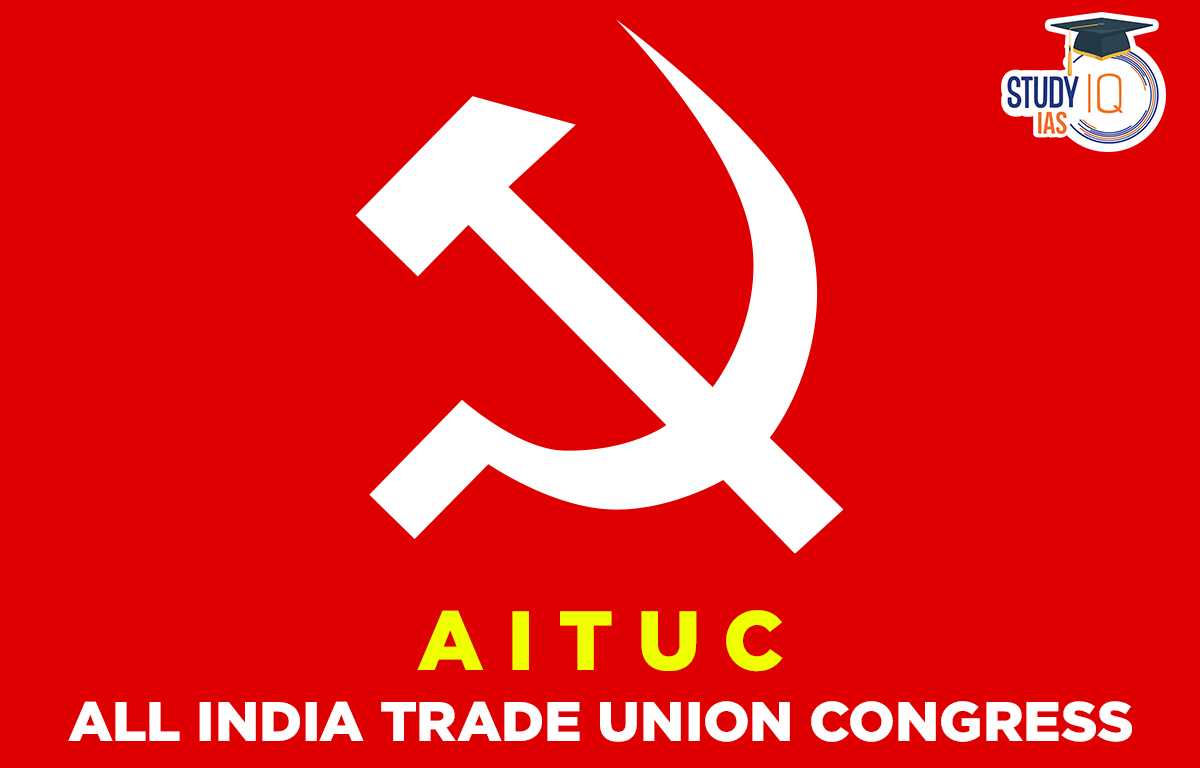Table of Contents
All India Trade Union Congress
The AITUC’s complete name is the All India Trade Union Congress. The second-largest trade union organisation in India after the Indian National Trade Union Congress, it is the country’s first Central Trade Union. This article’s essential subject is AITUC for the UPSC Exams.
Read about: Asiatic Society
All India Trade Union Congress History
The day it was made was October 31, 1920. Lala Lajpat Rai served as it’s first administrator. On October 31, 1920, the founding meeting got underway in Bombay’s Empire Theatre, with Lala Lajpat Rai serving as the first president. Bal Gangadhar Tilak, N.M. Joshi, B.P. Wadia, Diwan Chamanlall, Lala Lajpat Rai, and Joseph Baptista were among the original members of the All-India Trade Union Congress.
This organization has ties to the Indian Communist Party. Nearly eight years before the Indian National Congress, which served as the platform for the freedom fight, approved a similar resolution in 1929, the AITUC supported a resolution of Swaraj (total independence from British rule) during its second session in Jharia in 1921. In the years following World War II, the AITUC played a crucial role in the creation of the World Federation of Trade Unions (WTFU).
British communists had a considerable amount of influence over the AITUC in the 1920s. They gained complete authority during World War II, but when they decided to back Britain in the war effort, they lost some popular support. They favoured a violent anti-capitalist and anti-imperialist struggle, and their philosophy was based on class. Since then, the AITUC has been split between reformist and revolutionary factions.
Read about: Development of Indian Press
All-India Trade Union Congress Creation
Prior to 1920, India lacked a national federation to oversee union action. When the International Labor Organisation (ILO) held its first meeting in 1919, the absence of a national organisation presented a challenge. N. M. Joshi was chosen by the Indian administration to represent them without consulting the unions. Numerous unions protested in reaction. In response, Joshi suggested forming an All-India Trade Union Convention to settle the argument.
Labor leaders agreed that the Congress should meet in Bombay at a gathering in early July 1920. They asked that Joshi’s nomination by the government be withdrawn and that the Congress choose the ILO representative. Additionally in July, employees established a 500-member reception group under the leadership of Joseph Baptista, president of the Home Rule League. The reception committee initially planned for the Congress to take place in August 1920, but they subsequently moved it to October.
On October 31, 1920, the first assembly was held, with Lala Lajpat Rai serving as the chairman. The meeting was held by 101 delegates, several political figures, and a fraternal representative of the British Trades Union Congress. Rai was chosen by the participants to lead the Congress and represent India at the upcoming ILO conference in Geneva. Rai declared that the objectives of the Congress should be to coordinate, agitate, and educate after being elected and taking part in a procession of 10,000 people.
Read about: Lee Commission
All-India Trade Union Congress Splits along Ideological Differences
In less than ten years of operation, the AITUC started to break apart along doctrinal lines. The schism particularly separated the more conservative, reformist unions from the left-leaning, communist-inspired unions. Initially, moderates connected to the Indian National Congress founded AITUC.
Instead of advocating for a class conflict, they looked for peaceful, legal ways to help Indian workers. Negotiation was favoured over strikes by early AITUC leaders. In actuality, the majority of the early officials were not workers themselves. However, during the 1920s, communism became more significant within the AITUC. Of course, their ideology was founded on class, and they preferred a violent fight against capitalism and imperialism.
Up until 1928, when the split became more pronounced, the two factions were able to cooperate to some degree. The heightened division within the AITUC was caused by a number of factors. The conflict between the leaders of the organization was partially just a personal battle for dominance. Additionally, disagreements arose over a few very particular problems. For instance, there was a dispute in 1928 over the AITUC’s affiliation with a global labour group because the two sides couldn’t agree on it.
The communists advocated for membership in the Red International of Labor Unions, while the reformers favoured the International Federation of Trade Unions (IFTU). The Nehru Report 1928, a plan for a constitution that would grant India dominion status and internal self-government, was another problem. India should struggle for full independence, according to the communists.
Read about: Government of India Act of 1919
All-India Trade Union Congress UPSC
For any economy to develop inclusively there needs to be a vibrant and responsible trade union scene. It combats escalating inequality and declining working-class standards of life. One such pre-independence labour union that is still going strong is the AICTU. The majority of worker unions’ power has decreased recently. To achieve equilibrium between worker rights and development, AICTU must work hard. To prepare for the UPSC Exam, read all the information connected to the All-India Trade Union Congress.
Read about: Kakori Conspiracy


 Nagari Pracharini Sabha Revival: Backgro...
Nagari Pracharini Sabha Revival: Backgro...
 Ryotwari System in India, Features, Impa...
Ryotwari System in India, Features, Impa...
 Battle of Plassey, History, Causes, Impa...
Battle of Plassey, History, Causes, Impa...





















